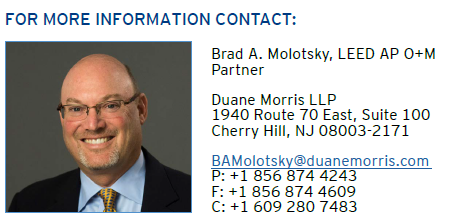On October 19, the U.S. Treasury Department issued the much-anticipated proposed federal opportunity zone regulations for the federal Opportunity Zone (OZ) tax incentive program created under the 2017 Tax Cuts and Job Act, as well as related Revenue Ruling 2018-29.
The guidance indicates that a second set of proposed regulations will be issued later in the year that will address issues such as defining “original use,” the treatment of assets sold by a Qualified Opportunity Fund (QOF) and logistical issues with respect to the movement of tangible assets of a QOF business in and out of an Opportunity Zone.
These regulations were highly anticipated by the real estate development and fund creation communities, which have been awaiting clarity from Treasury since the creation of the Opportunity Zone Program earlier this year. As Forbes magazine indicated a few weeks ago, there is likely $6 trillion of capital gains in the U.S. that represent potential available investment capital that could use this program to drive investment into applicable Qualified Opportunity Zone (QOZ) businesses or real estate.
THE PROPOSED REGULATIONS PROVIDE THE FOLLOWING CLARITY AND FLEXIBILITY FOR QOFS:
1. Gains
Only capital gains may be deferred under the Opportunity Zone Program.
2. Entity Structure
A QOF must be an entity classified as a corporation or partnership for federal income tax purposes— noting that LLC, LPs, REITs, RICs and common trusts under Section 584 do work for this purpose.
3. Collateral
While an investment in a QOF must be equity, an investor in a QOF may use its interest in a QOF as collateral for a loan.
4. Start Date
A QOF has the ability to establish the initial month for the six-month period after which the QOF must hold at least 90 percent of its assets in QOZ property.
5. “Substantially All” Test for Businesses
Substantially all of the tangible assets of a QOZ business must constitute QOZ business property. The proposed regulations now define “substantially all” as 70 percent. The combination of the requirement that a QOF hold at least 90 percent of its assets in QOZ property and the requirement that 70 percent of a QOZ business constitute QOZ business property may reduce the Opportunity Zone business property requirement to 63 percent of the investments made in a QOF, providing greater flexibly.
6. Reasonable Working Capital
There is a “reasonable working capital” safe harbor with respect to nonqualified financial property limitation for the cash to be used by a QOZ business for the construction or improvements for a period of 31 months, provided there is a written plan and schedule for the use of such equity and the QOZ business substantially complies with the schedule.
7. Expiration Date
The benefit of the election to increase of an investor’s basis in a QOF to fair market extends beyond the designation of an opportunity zone until December 31, 2047.
8. Gains of Partnerships and Partner’s Gains
A partnership may elect to defer all (or a part) of a capital gain. If an election is made, the elected deferred gain is not included in the distributed shares to the partners. If, however, the partnership does not elect to defer the gain, a partner may elect its own deferral with respect to the partner’s distributed share of its gain. The partner has 180 days from the beginning of the last day of the partnership’s taxable year, effectively giving the partner a second bite at the gain apple and use of the Opportunity Zone deferral and reduction methodology for capital gains.gain. The partner has 180 days from the beginning of the last day of the partnership’s taxable year, effectively giving the partner a second bite at the gain apple and use of the Opportunity Zone deferral and reduction methodology for capital gains.
Revenue Ruling 2018-29 provides an example of land and a building in an Opportunity Zone being converted from commercial to residential use and provides that such conversion of use did not constitute an original use. When determining the increase in basis required to satisfy the substantial improvement test, land is excluded from this calculation. Thus, land value will not need to be included when calculating the increase in basis required to satisfy the substantial improvement test.
In sum, the proposed regulations provide greater flexibility to a QOF in three of the more problematic requirements for the use of the Opportunity Zone Program. First, the combination of Revenue Ruling 2018-19 and the definition of “substantially all” with respect to the percentage of tangible assets constituting Opportunity Zone business property provides flexibility in satisfying the substantial improvement requirement for QOZ business property. Second, the 31-month safe harbor with written plans and schedule permits longer-term projects to be completed. Finally, while investors wait for clarity in the next round of regulations with respect to the ability and effect of a QOF selling and buying assets in an Opportunity Zone, the proposed regulations permit a holder of an equity interest in a QOF to use that interest as collateral for debt.
The regulations can be relied on by investors and developers in transactions so long as the rules are followed.
About Duane Morris
Duane Morris attorneys continue to work with a multitude of clients, helping them structure fund formations, fund investment in qualified opportunity zones, creation of qualified businesses within opportunity zones, entity creation, securities filings and blue sky regulatory filings in this exciting space.
For Further Information
If you have any questions about this Alert, please contact Brad A. Molotsky, Arthur J. Momjian, any of the attorneys in the Real Estate Practice Group, attorneys in the Affordable Housing and Community Development Practice Group, attorneys in the Project Development/Infrastructure/P3 Practice Group or the attorney in the firm with whom you are regularly in contact.
Disclaimer: This Alert has been prepared and published for informational purposes only and is not offered, nor should be construed, as legal advice. For more information, please see the firm’s full disclaimer.



